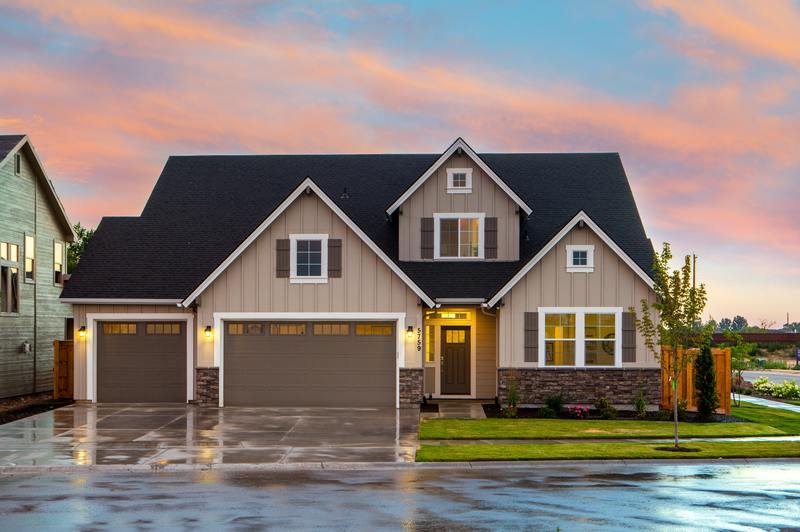Mildew is definitely an unpleasant sight and this is why it will come in handy to learn how to pressure wash a house with mildew. They are not only ugly on walls and roads, but they can also be hazardous to people ‘s wellbeing and lifestyles.
If mold and mildew are a problem in your home, there are a few things you may do to solve the problem. One method in particular has proven to be quick, inexpensive, and effective.

Using A Pressure Wash In Mildew Remediation
Mold and mildew may be successfully removed from your home with a pressure washer. Use it on the walls, fences, decks, sheds, walks, and driveways of your property.
A pressure washer, when used correctly, should be able to remove any mold and mildew that has grown on the outside of your home, whether it is on wood, vinyl, brick, or concrete.
Step #1. Scrub with a solution
Begin by scrubbing the afflicted area with a mild detergent. After which, get a mold and mildew concentrate.
To dilute the concentrate solution, combine it with the required amount of water. Then put it into the detergent tank of your power washer.
If you want to upgrade your game, check this article on what is the best cleaner to use on a pressure washer.
Step #2. Grab a nozzle
After that, choose a black-colored nozzle. This is a low-pressure detergent nozzle that is suitable for cleaning tasks.
This detergent nozzle might be pink at times but you should never utilize a nozzle that is red in color. Use your pressure washer to attach the nozzle.
Step #3. Work horizontally
Begin spraying the surface longitudinally with back and forth strokes, starting at the bottom and making your way to the top. This method avoids streaking, which would otherwise appear if you worked from top to bottom.
Start by standing approximately a foot away from the surface and increase your distance as needed. Be wary of the pressure washer’s potential for recoil by holding the wand in both hands.
Step #4. Maximize resources
If you’re cleaning the siding of a two-story house, use a pressure washer extension wand. Pressure washing from a ladder is not suggested because it is possible to lose control and fall due to the force emitted by the washer.
Purchase an extension wand. It’ll be useful for those difficult-to-reach high areas.
Step #5. Let the formula be absorbed
Allow 5 to 10 minutes for the cleaning detergent to sink in and settle on the surface. Allowing the surfaces to dry fully is not a good idea.
Step #6. Switch nozzles
Change to a white-colored nozzle, which produces a broader water fan and somewhat greater water pressure than the black-colored nozzle.
When washing, you’ll wish to be cautious about which nozzle you use. Because some surfaces, such as brick, are softer than others, it’s a good way to check on a tiny patch before increasing the water pressure with a color-coded nozzle tip.
Choose a yellow-colored nozzle if your surface can tolerate a white nozzle spray without issue. Dirt, mildew, and paint may all be removed using yellow nozzles.
Step #7. Final wash
Rinse the entire surface from top to bottom. Working in small parts with horizontal motions, as if you were washing with detergent, is a good idea.
A Few Pro-Tips
Before beginning a task like this, there are a few things to keep in mind.
You’ll have to understand what sort of pressure washer to use, be conscious of the surface you’ll be working on, pay attention to the amount of pressure the washer produces, and use the cleaning product safely.
Are you aware that there are washers that utilize hot water and washers that use cold water, in addition to the conventional choice of either gas or electric pressure washers? Which one should you use to get rid of mold and mildew specifically?
Both will get the job done, but a hot water pressure washer will. Warm water kills mildew spores more effectively.
When combined with a forceful water blast, you’ll be able to eliminate mold and mildew from any surface in no time. Power washing is the process of pressure washing with hot water.
Since we are on the topic of pressure washer specifications, check out this article on “what size of pressure washer do I need to clean concrete”.
Apart from which, you can do some prep work to improve the cleanliness of the mildew-infested area. Disinfectants such as bleach and vinegar are popular for killing bacteria, fungus, and viruses.
Allow 5-10 minutes for the bleach or vinegar solution to sit before pressure washing to complete the hard labor of washing and rinsing. The pressure washer will perform a better job of removing the dirt and grime that has collected.
Make sure you don’t use either of these solutions in your pressure washer. They’ll wreak havoc on your pressure washer.
On metals and pipelines, bleach is extremely corrosive. Do the prep work by hand first, then use the pressure washer to wash and rinse.
Conclusion
Learning how to pressure wash a house with mildew is a handy knowledge to homeowners. Keep the mildew at bay by keeping the power of washing with you!
